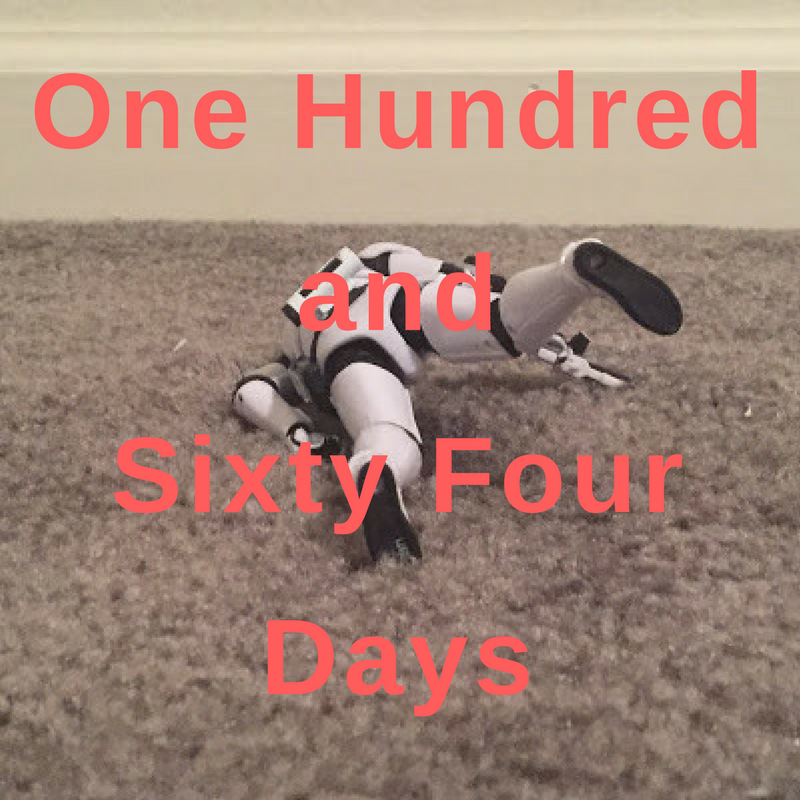
You know how this blog works by now: if I say I'm going to write about something, that invariably means I'm not actually going to write about whatever that thing is. So, almost two weeks ago I said I was going to write about my favorite horror movie, after I spent a great deal of time talking about one of my least favorite horror movies, Last House on the Left. The idea was to get it posted by Halloween. Well, surprise! Happy Thanksgiving!
Anyway, we're still alive, so let's get to it.
I still wake up in the middle of the night with cold sweats from Hellraiser. It's been twenty-one years since the movie's initial release - twenty-two since the publication of The Hellbound Heart - and it's still the gold standard by which I judge all subsequent horror films. I don't have a lot of patience for slasher films, and must admit to having seen almost none of the recent crop of "torture porn" movies: supernatural (or sci-fi) horror is my preference, although I admit that a well done terrestrial horror film like the original Texas Chainsaw Massacre or William Lustig's sublimely weird Maniac gets my respect. But for the most part I don't see the appeal of horror based in these kind of (relatively!) realistic milieus - for my money, reading a book about someone like Albert Fish is far more horrifying than watching a movie about a fake Albert Fish. (For the record, I don't recommend actually reading a whole book about Fish - I did, once, and I will regret it for the rest of my life. There's horror, and then there's horror.)
This is why I like H.P. Lovecraft so much. The horror at the heart of Lovecraft is less physical fear than existential dread, the logical extension of 19th century American gothic literature by folks like Poe, Melville and Hawthorne. The fear is not really the fear of death or pain, but the fear of displacement and insignificance - the idea that there is a much larger realm of reality just outside the boundaries of our own, in the context of which we are less than vermin. When this world comes into contact with our own, however briefly, the result is nothing less than transcendental, in the purest Kantian terms: the "real" universe, in its purest form, is unimaginably hostile to life, all life, and especially our life on Earth. More than a knife in the dark, that is primal fear: the fear that, in the final analysis, humans are absolutely superfluous, and that the all-consuming fear of the unknown which dominates human society since time immemorial is in fact the only healthy, rational response to an uncaring universe. It's not particularly pleasant. There is no gratifying reconciliation at the end of the story after the alien menace has been vanquished and the ethical status quo restored.
Speaking purely in terms of style, Clive Barker could not be more unlike Lovecraft. For one thing, Lovecraft had no time - literally, no time whatsoever - for sex. Sex, and physicality in general, is banished from his stories. The "action" in a Lovecraft story is usually entirely cerebral, with the realms of sensual experience confined solely in pejorative terms, usually in an explication of "primitive" ceremony and superstition (see "The Call of Cthulhu", with it’s portrait of a savage and unholy African “voodoo” ceremony, for a great example of early 20th century racism at its most virulent). Barker, however, is all about the sex. I haven't read everything of his, but of what I have read - the Books of Blood, Imajica, and of course, The Hellbound Heart - sex is foremost among Barker's preoccupations. Sex is magic, sex is power, sex is fear, sex is terror - sexual imagery surrounds us and confronts us on a daily basis. The body itself is a canvas in Barker, as in Melville. Physicality is not inviolate.
But in many ways Hellraiser (and The Hellbound Heart, but I'll refer mainly to the film adaptation from here on in) plays like a Lovecraft story, if Lovecraft decided to hang out in S&M clubs. Which is flip, obviously, but bear with me: the plot of Hellraiser is centered around the circumstances by which an unknown, inherently sinister and supremely powerful universe of unending cruelty and pain comes into brief contact with our own. The representatives of this universe - the sadistic Cenobites pictured above - are implacable, irresistible forces of inevitable evil. Once summoned, they cannot be dismissed until they take their rightful tithe (with the rare exception of a propitious bargain). Their purpose is largely unexplained. There is no way to "vanquish" them except by means of temporary abatement. As with Lovecraft's "Great Old Ones", the mute god Leviathan who sits in the middle of the infernal labyrinth is incommunicable. There is no consolation, no appeasement, no remorse. The Elder Gods communicate their unknowable desires through their emissary Nyarlathotep, just as the Cenobites follow the ominous will of their master.
But arguably the most important element of Hellraiser’s unique structure lies in the fact that although the Cenobites are certainly monsters, they are not actually villains. (At least, that is, in the first two films and the book – everything afterwards gets progressively more off-model.) The villains from the first film are the people trying to escape the Cenobites’ grasp – Frank Cotton and his lover Julia. Frank opened the puzzle box and was taken to Hell by Pinhead and Co. After Frank’s disappearance, Larry inherits his brother’s house, with his wife Julia (who, unknown to Larry, had conducted an affair with Julia on the eve of their marriage). Larry accidentally spills some blood in the house, opening up a tiny gateway through which Frank can return to Earth from Hell. Once there, he enlists Julia to aid in his escape – which means, he needs living blood and flesh in order to restore his desiccated body. This is supplied by Julia, who lures a string of hapless victims to Frank’s room.
It’s remarkable how many classic horror archetypes Barker manages to touch upon in the course of his story. Obviously, the plot hinges on a haunted house, occupied by a revenant spirit both figuratively and literally connected to the past sins of its occupants. Frank and Julia are both demons of a sexual nature – an incubus and a succubus, to be precise – and Frank’s appetites for life-nourishing blood make him a vampire. Towards the end of the film he even skins Larry and steals his face – becoming a chameleon, stealing his brother’s identity and usurping his family life. And, of course, the movie is driven by a series of Faustian bargains the main characters make – or attempt to make – with the hellish Cenobites who relentlessly pursue them.
It is also necessary to point out the context – perhaps blessedly distant at such a late date, but important nonetheless – that at the time of the movie’s release, Clive Barker was an openly gay writer working in the mid-80s. In particular, he was writing about sexual transgression, and the process by which people are remade and destroyed by their desires. It’s something of a canard that horror films are ruthlessly conservative in their sexual attitudes: young men and women – especially women – who transgress against cultural norms (by going out in the dark woods to make out with their boyfriend, for example) are routinely dispatched by sinister forces of reactionary propriety. The Cenobites, however, are not anti-sensualists: they are the ur-sensualists. The puzzle box is ostensibly a key to a universe of untrammeled sensual experience, pain and pleasure intertwined. The book makes the connection far more explicit: when Frank opens the box in The Hellbound Heart, he experiences the most intense, unbelievable orgasm he has ever experienced in his life. This is both prelude to and in conjunction with incredible, never-ending physical and emotional torture – for the Cenobites, the two sensations of pleasure and pain are inextricable. Their willingness to transcend all boundaries in order to experience the most extreme forms of sensual abandon is one shared, at least ostensibly, by the poor souls who open up the box and summon the monsters. You can’t make the argument that Frank didn’t know exactly what he was getting into when he opened the box: he wanted to push the conventional limitations of sensuality. That he couldn’t guess how far these explorations would take him is merely incidental to the Cenobites’ agenda. They are extremely enthusiastic sexual evangelists.
So, is Hellraiser another in a long line of AIDS metaphors? I think the Cenobites’ nature as unmistakably sexual creatures complicates rather than simplifies the question. Certainly, pursuing sexual gratification to its illogical conclusion leads to absolute degradation and physical abasement. But it’s not as strictly puritanical as that. There is a pro-safe-sex message nestled deep within the thorny heart of the film, wrapped in the fact that the Cenobites are creatures of extremity, alien to the concepts of moderation or restraint. Frank and Julia, the ghoulish lovers whose attempts to avoid the strict consequences of their transgression bring about their ultimate demise, are morally bankrupt. Julia, despite Frank’s obvious inhumanity, remains devoted to reclaiming their sexual freedom regardless of the cost. When Frank’s niece Kirsty opens the box out of morbid curiosity, on the other hand, there is no sensual element, merely infelicitous curiosity. What is needed is not to dismiss the sensual, but to moderate the sensual, to insert a judicious prophylactic between the natural impulse of sexual curiosity and the wretched consequences of imprudent impulse. The problem is not sex but the consequences of sex - a fine but important distinction.
Sex is dangerous and leads the viewer to strange places. The Cenobites are symbols of unbridled sexual energy turned dangerous and deadly – gleaming leather sewn into pale flesh, self-mutilation turning from expression into compulsion and from compulsion into ritual. Monsters should be repulsive and fascinating at the same time, grotesque and glamorous in equal measure. All the great movie monsters combine a strong visual with a distinctive personality: from the graceless exterior and childlike naiveté of James Whale’s original Frankenstein, through to the mute, silent hunter of Ridley Scott’s original Alien on through even to the (tasteless but certainly memorable) corny jokes of child-murderer Freddy Krueger. The Cenobites (especially Doug Bradley’s “Pinhead”) combine the appearance of physical abandon with the cruel implacability of aristocratic authority – authoritarian charm. They are every inch sexual beings, and as such they confront and threaten the most intimate, most carefully guarded caverns of human appetite and fear - not merely mortality, but something far more disturbing.





No comments :
Post a Comment